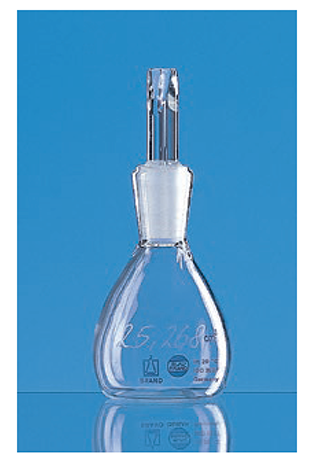How to Use a Density Bottle
Density bottles are mainly used to determine the density of liquids of moderate viscosity. They are not volumetric instruments, however, they are calibrated 'to contain' as in the case of volumetric flasks.
Handling
- Determine the weight of the dry and empty density bottle.
- Fill the density bottle with liquid, avoiding bubbles. The ground neck should be covered to about 1/3.
- In a thermostatic bath, adjust the temperature of the bottle and contents to 20 °C.
- Align the stopper respectively, the thermometer of the density bottle according to the marking, and insert carefully. The capillary tube fills up and the displaced liquid comes out.
- Carefully dry the outer surfaces of the stopper (respectively, the side capillary) and the density bottle with tissue.
- Determine the weight of the filled density bottle.
Calculate the density from the mass (weight) and the volume of the liquid at the reference temperature of 20 °C. The volume is engraved on the bottle. Use the following equation:

Density (ρ) = Mass (m)/Volume (V)
Take the buoyancy of the air into account for weighing.
Note: Calibrated density bottles have a unique identification number on all component parts. Only use parts with the same number together.
Materials
Loading
Sign In To Continue
To continue reading please sign in or create an account.
Don't Have An Account?